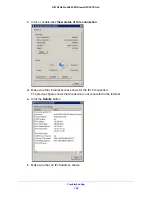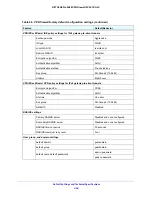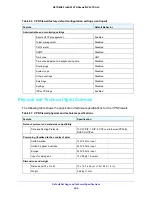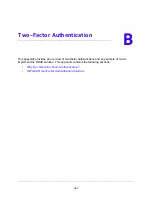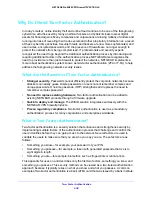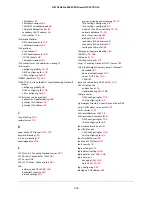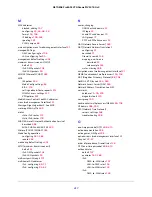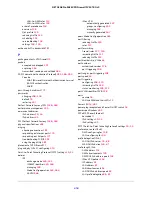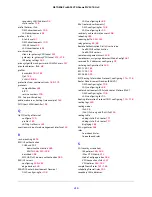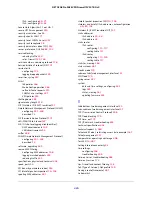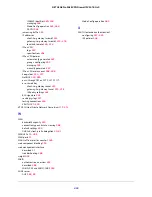
Two-Factor Authentication
408
NETGEAR ProSAFE VPN Firewall FVS318G v2
Why Do I Need Two-Factor Authentication?
In today’s market, online identity theft and online fraud continue to be one of the fast-growing
cybercrime activities used by many unethical hackers and cybercriminals to steal digital
assets for financial gains. Many companies and corporations are losing millions of dollars and
running into risks of revealing their trade secrets and other proprietary information as a result
of these cybercrime activities. Security threats and hackers are now more sophisticated, and
user names, encrypted passwords, and the presence of firewalls are no longer enough to
protect the networks from being compromised. IT professionals and security experts
recognized the need to go beyond the traditional authentication process by introducing and
requiring additional factors in the authentication process. NETGEAR also recognizes the
need to provide more than just a firewall to protect the networks. NETGEAR implements a
more robust authentication system known as two-factor authentication (2FA or T-FA) to help
address the fast-growing network security issues.
What Are the Benefits of Two-Factor Authentication?
•
Stronger security
. Passwords cannot efficiently protect the corporate networks because
attackers can easily guess simple passwords or users cannot remember complex and
unique passwords. One-time passcode (OTP) strengthens and replaces the need to
remember complex password.
•
No need to replace existing hardware
. Two-factor authentication can be added to
existing NETGEAR products through a firmware upgrade.
•
Quick to deploy and manage
. The WiKID solution integrates seamlessly with the
NETGEAR VPN firewall products.
•
Proven regulatory compliance
. Two-factor authentication is used as a mandatory
authentication process for many corporations and enterprises worldwide.
What Is Two-Factor Authentication?
Two-factor authentication is a security solution that enhances and strengthens security by
implementing multiple factors of the authentication process that challenge and confirm the
users’ identities before they can gain access to the network. Several factors are used to
validate the users to make sure that you are who you say you are. These factors are as
follows:
•
Something you know—for example, your password or your PIN.
•
Something you possess—for example, a token with generated passcode that is six to
eight digits in length.
•
Something you are—for example, biometrics such as fingerprints or retinal prints.
This appendix focuses on and describes only the first two factors, something you know and
something you possess. This security method can be viewed as a two-tiered authentication
approach because it typically relies on what you know and what you possess. A common
example of two-factor authentication is a bank (ATM) card that was issued by a bank institute:

